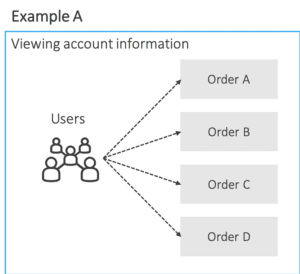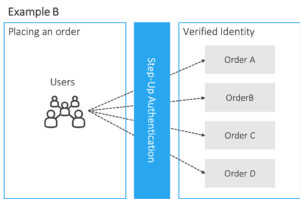Last time I wrote you about our typical customer case from SSO (Single Sing-On) point of view and about the benefits of having your customer identities in one place. The joy of having one password and one user ID that covers all the e-services is undeniable. Your customers don’t have to play the “password game” where one tries to remember the right password and user ID’s for the right services. Other benefits are that the user experience is significantly greater, information is behind one user ID and on top of that, you save real money when the number of password resets reduces.
SSO is great but there is still more potential in CIAM that exceeds SSO. The need for customer service that deals with user management still exists. What does that exactly mean? Let’s think this for a moment from your customers point of view.
This is Chris from customer services, how may I help you?

The user that you have in your e-service belongs to different groups and within the groups there can be different roles. For example, this user can be a contact person in one group that is part of an organisation that uses your services. If another member of that group (and organisation) has a need to access your services, the typical action path is that he/she contacts the contact person, who contacts the company’s customer service and only then, they can get to the actual point. When there are lot of steps, it takes time and resources, and in the worst case the information can change when it’s handled by so many people. If that happens, they start from the beginning and the contact person is stuck in the customer service’s phone line again. Ever had that same experience?
Matters become even more complicated, if not impossible, if the contact person of an organisation (A) needs to authorise an another organisation (B) or employee of the organisation (B).
Delegate

This is where delegated service management steps in. Self-service user management makes it possible for delegating the user management to the customer. In practise, this means that the contact person from the previous example can handle issues based on different roles and grant access to the service for other members of the group, or even other organisations (B). The need of the intermediary and calling to the customer service are not necessary anymore. In addition, the user information will be kept up to date, because the customers can do it themselves.
For you this means that you can get information that is much more detailed about your customers. Before, the only known customer was the contact person, but now the different layers in the customer’s organisation are visible. With better knowledge of your customers, you can serve them better. Most of all, this means significant cost savings because the load on the customer service is reduced.
Read more about the outstanding DNA customer case or Contact Us if your service could benefit from Delegated Service Management.
This was the second part of our typical CIAM customer case series. If you want a sneak peek of the next blog, read our Digitalisation Maturity Model that goes through the different stages of CIAM.



About The Author: Minttu Junikka
More posts by Minttu Junikka